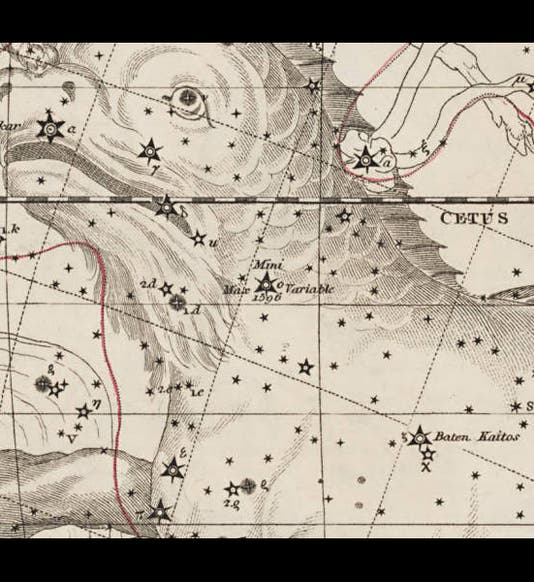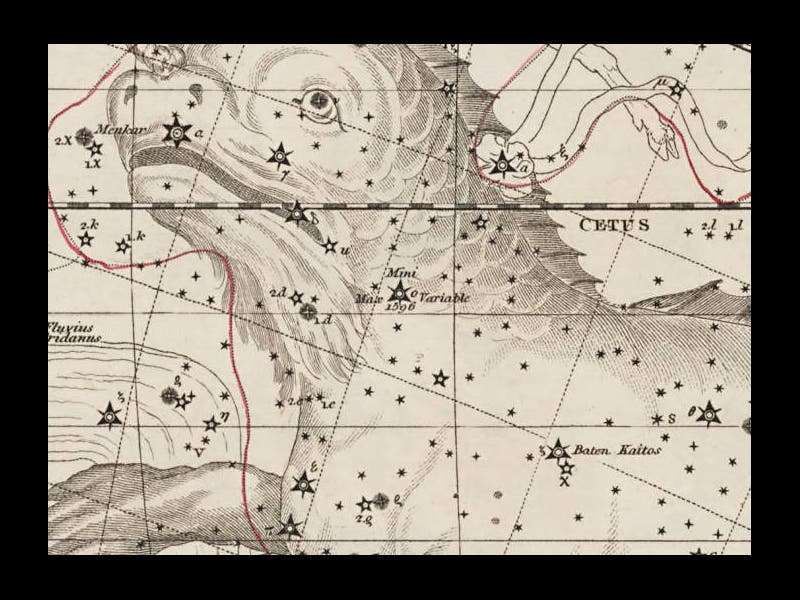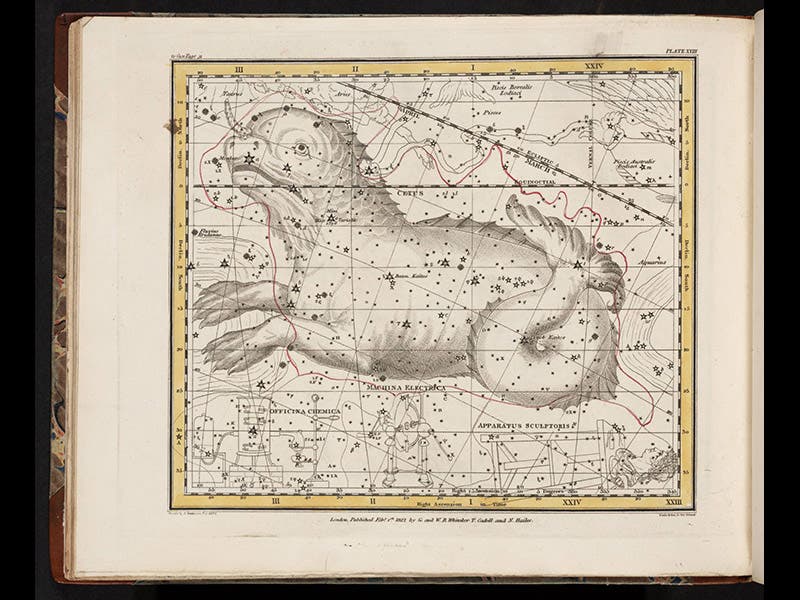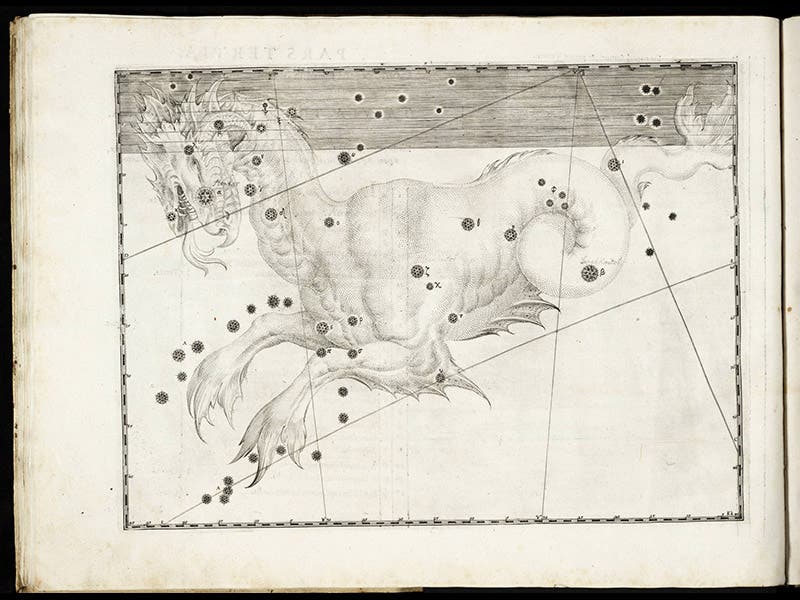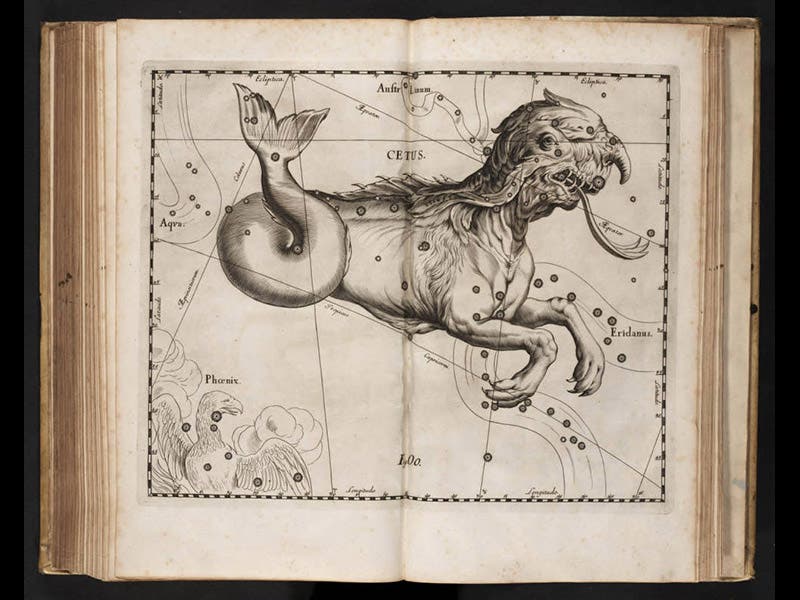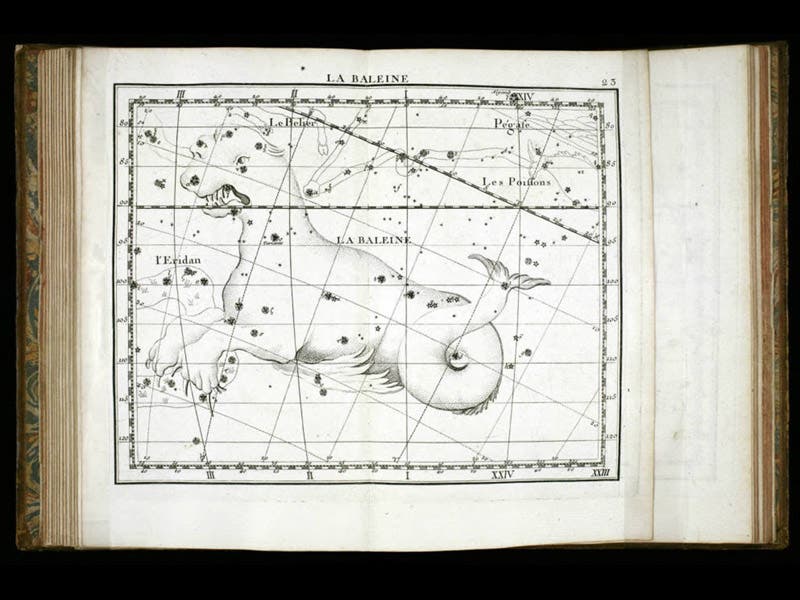Scientist of the Day - David Fabricius
David Fabricius, a German astronomer, was born Mar. 9, 1564. In 1596, he observed a star in the breast of Cetus, the Whale. Some time later, he looked for the star, and it was gone. Later still, the star reappeared. This was the first recorded observation of a periodic variable star. When Johan Bayer included a plate of Cetus in his Uranometria (star atlas) of 1603, he included Fabricius’ star and called it omicron Ceti. The astronomer Johannes Hevelius would later call it Mira Ceti, the "marvelous star”, a name by which it is still referred to today. Its magnitude cycles from bright to invisible and back with a period of 332 days. We now know that Mira Ceti is a dying star, a red giant that is unstable, but with a regular period of instability. There are many such periodic variables in the heavens. Fabricius discovered the first one.
Out first image above is a detail from the Cetus plate (second image) in Alexander Jamieson’s A Celestial Atlas (1822), where the star is labelled “variable 1596”. This is followed by Bayer’s Cetus (third image), Hevelius’s Cetus, from his Prodromus astronomiae (1690; fourth image), and John Flamsteed’s Cetus, from the French edition of his Atlas Celeste of 1776 (fifth image). All of these celestial atlases are in our History of Science Collection.
Dr. William B. Ashworth, Jr., Consultant for the History of Science, Linda Hall Library and Associate Professor, Department of History, University of Missouri-Kansas City

